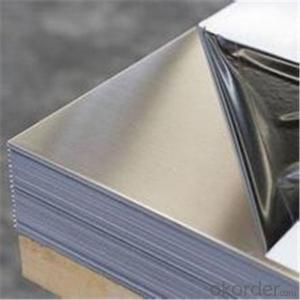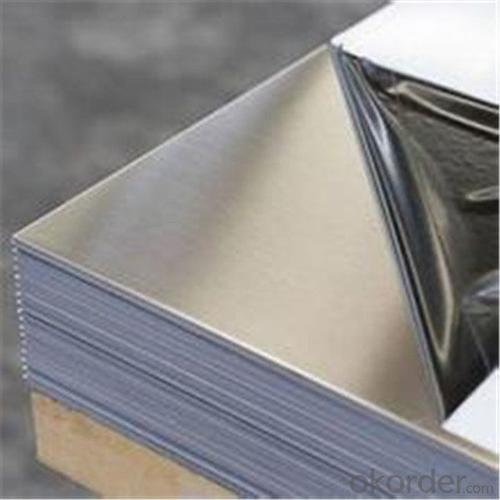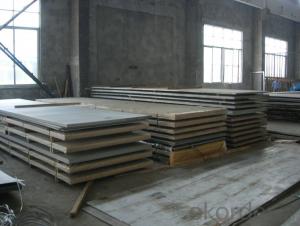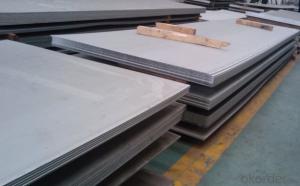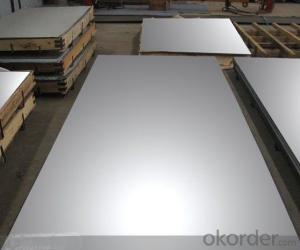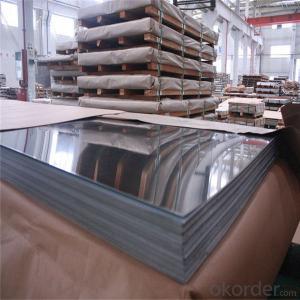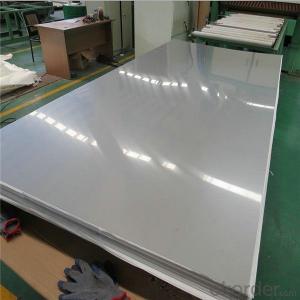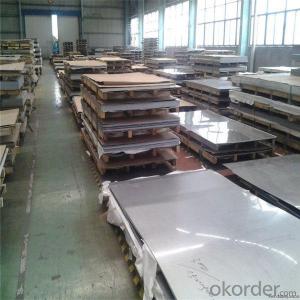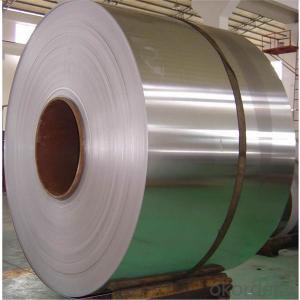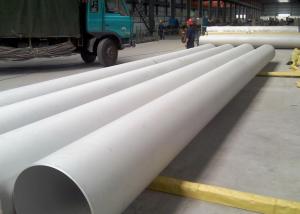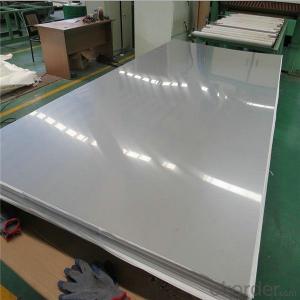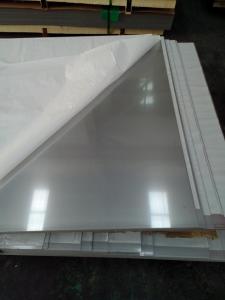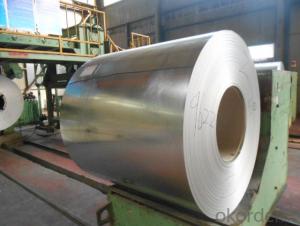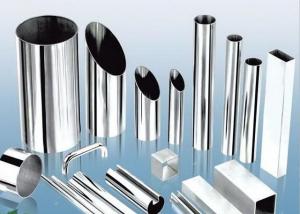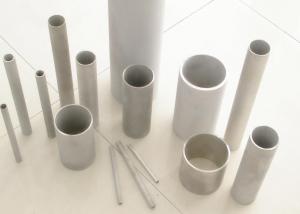Stainless Steel Sheet 321 ASTM AISI ISO
- Loading Port:
- Shanghai
- Payment Terms:
- TT OR LC
- Min Order Qty:
- 1 m.t.
- Supply Capability:
- 20000 m.t./month
OKorder Service Pledge
OKorder Financial Service
You Might Also Like
Specification
. Specifications about Stainless Steel Sheet 321 ASTM AISI ISO
Commodity | Professional 430 201 202 304 304l 316 316l 321 310s 309s 904l stainless steel sheet |
Grade | 201,202,304,304L,316,316L,310S,309S,321,301,310,410,420,430,904L |
Brand | TISCO ,BAOSTEEL,POSCO,JISCO,LISCO |
Certification | SGS,BV,IQI,TUV,ISO,etc |
Thickness | 0.2mm-150mm |
Width | 1000,1219,1250,1500mm, or as your requirements |
Length | 2000,2438,2500,3000,6000mm, or as your requirements |
Surface | No.1, 2B, BA, 8K Mirror, Hairline,satin, Embossed,brush,No.4,HL,matt,pvc film,laser film. |
Standard | ASTM,AISI,SUS,JIS,EN,DIN,GB, ASME,etc |
Delivery time | 5-7 days after confirming the order |
MOQ | 1 Ton |
Advantages | Showing the splendor of your quality, wearresistant as well , strong corrosion resistance and decorative effect, durable and beautiful in good taste. |
Stainless Steel Sheet 321 ASTM AISI ISO
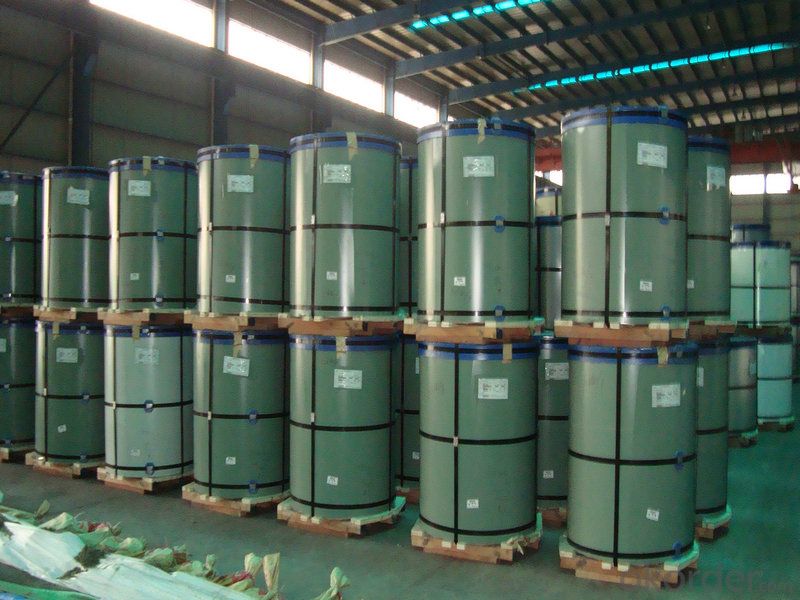
Stainless Steel Sheet 321 ASTM AISI ISO
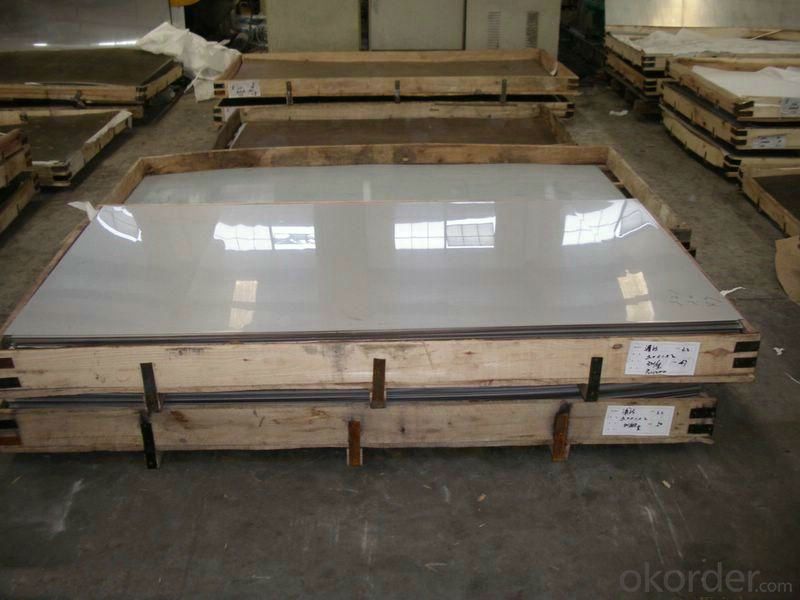
5.Characteristics and application Stainless Steel Sheet 321 ASTM AISI ISO
Surface finish | Characteristics and application |
NO.2B | The surface brightness and flatness of no2B is better than no2D. then through a special surface treatment to improve its mechanical properties,No2B could nearly satisfy comprehensive uses. |
NO.3 | Polished with abrasive belt of git#100-#200, have better brightness with discontinuous coarse stria, used as inner and external ornaments for building, electrical appliances and kitchen utensils etc. |
NO.4 | Polished with abrasive belt of grit #150-#180,have better brightness with discontinuous coarse stria,but thinner than No3, are used as bathtub buildings inner and external ornaments electrical appliances kitchen utensils and food processing equipment etc. |
HL | Polished with abrasive belt of grit #150-#320 on the NO.4 finish and has continuous streaks, mainly used as buildings ornaments elevators,door of building, frontal plate etc. |
BA | Cold rolled, bright annealed and skin-passed, the product have excellent brightness and good reflexivity like mirror,kitchen apparatus,ornament etc. |
8K | The product have excellent brightness and prefer reflexivity can to be the mirror. |
Stainless Steel Sheet 321 ASTM AISI ISO
5.Payment : Usually 30% of the amount by T/T as deposit , and the balance money shall be paid by T/T after got the faxed B/L.Or L/C at sight .
6. Package: Kraft paper+Hard board+metal/wooden pallet+metal strip; or based on the customer requirement.
7. USE: construction.machinebuilding,container manufacturing,shipbuilding,bridges and so on.
The operating philosophy of our company : high quality and best service and competitive price and prompt delivery .We sincerely welcome the old and new customers to inquiry the price . any questions and needs you have , pls don't hesitate to contact us anytime .
- Q: Can stainless steel sheets be used for decorative panels?
- Yes, stainless steel sheets can definitely be used for decorative panels. Stainless steel is known for its durability, strength, and resistance to corrosion, making it an excellent choice for decorative purposes. It is widely used in interior design, architecture, and various industries for its aesthetic appeal. Stainless steel sheets can be customized with different finishes, such as brushed, polished, or patterned, to create unique and visually appealing decorative panels. Additionally, stainless steel sheets can be easily cut, shaped, and formed into various designs, making them versatile for different decorative applications. Whether it is for wall cladding, elevator interiors, furniture accents, or signage, stainless steel sheets offer a modern, sleek, and sophisticated look that enhances the overall aesthetics of any space.
- Q: Can stainless steel sheets be used for automotive body panels?
- Yes, stainless steel sheets can be used for automotive body panels. Stainless steel provides excellent corrosion resistance, durability, and aesthetic appeal, making it a suitable material for automotive applications.
- Q: 430 stainless steel plate maximum temperature tolerance is how many degrees?
- 430 stainless steel plate is 430 stainless steel sheet shaped products. 430 stainless steel plate according to the thickness can be divided into thin plate, medium plate, thick plate and other forms; at present the maximum width of up to 2000mm, length is not limited.
- Q: How are stainless steel sheets manufactured?
- Stainless steel sheets are manufactured through a multi-step process that involves several key stages. The production begins with the melting of raw materials, including iron ore, chromium, and nickel, in an electric arc furnace. This process helps to eliminate impurities and create a molten metal. Once the molten metal is obtained, it is cast into slabs or billets. These slabs are then hot rolled, which involves passing them through a series of rollers to reduce their thickness and increase their length. This initial rolling process also helps in refining the grain structure of the steel, making it more uniform. After hot rolling, the steel is pickled and annealed to remove any scale or impurities formed during the initial rolling process. Pickling involves immersing the steel in a bath of acid to remove the surface oxide layer, while annealing is a heat treatment process that helps to reduce internal stresses and improve the steel's ductility. Following pickling and annealing, the steel is cold rolled. Cold rolling involves passing the annealed steel through a set of rollers at room temperature to further reduce its thickness and improve its surface finish. This process also imparts the desired mechanical properties to the stainless steel sheets. Once the desired thickness is achieved through cold rolling, the stainless steel sheets are subjected to various finishing processes. These may include surface treatments like polishing, embossing, or etching to enhance the appearance and texture of the sheets. Additionally, the sheets can be cut to size using shearing or laser cutting techniques. Finally, the stainless steel sheets undergo quality control checks to ensure they meet the required specifications. This includes inspecting the dimensions, surface finish, and mechanical properties of the sheets. Once approved, the sheets are ready for packaging and distribution to various industries that utilize stainless steel in their applications. Overall, the manufacturing process of stainless steel sheets involves a combination of melting, casting, hot rolling, pickling, annealing, cold rolling, and finishing. This meticulous process ensures the production of high-quality stainless steel sheets that possess excellent corrosion resistance, strength, and aesthetic appeal.
- Q: What is the electrical resistance of stainless steel sheets?
- The electrical resistance of stainless steel sheets can vary depending on various factors such as the grade of stainless steel, its thickness, and the specific properties of the alloy used. Generally, stainless steel is known to have a relatively high electrical resistance compared to other metals. This is due to its composition, which includes a significant amount of chromium and other alloying elements that hinder the flow of electric current. However, the exact value of electrical resistance can range from a few micro-ohms per square meter to several ohms per square meter, depending on the specific grade and thickness of the stainless steel sheet. Therefore, it is crucial to consult the manufacturer's specifications or conduct specific electrical resistance tests to obtain accurate values for a particular stainless steel sheet.
- Q: How long do stainless steel sheets last?
- Stainless steel sheets are renowned for their durability and long-lasting nature. The lifespan of these sheets can vary depending on factors like the grade and quality of the stainless steel, environmental conditions, and maintenance practices. However, with proper care and normal circumstances, stainless steel sheets can endure for many decades or even a lifetime. The longevity of stainless steel is greatly influenced by its ability to resist corrosion. This is made possible by the presence of chromium, which forms a passive layer on the surface of the material, safeguarding it from rust and corrosion. This natural protective layer enables stainless steel sheets to withstand harsh environmental conditions, including exposure to moisture, chemicals, and extreme temperatures. Moreover, the grade of stainless steel also plays a role in its lifespan. There are different grades available, such as 304, 316, and 430, each offering varying levels of corrosion resistance. Higher grades, particularly 316 stainless steel, exhibit greater resistance to corrosion and are commonly used in marine and highly corrosive environments, ensuring a longer lifespan. To maximize the lifespan of stainless steel sheets, proper maintenance is crucial. Regular cleaning with mild detergents and non-abrasive materials is necessary to eliminate dirt, grime, and contaminants that can degrade the protective layer of stainless steel. Additionally, it is important to avoid contact with harsh chemicals or abrasive materials that can scratch or damage the surface. While stainless steel sheets have an impressive lifespan, it is important to acknowledge that their durability is not limitless. Over time, factors like wear and tear, exposure to severe conditions, or improper maintenance can gradually diminish the protective layer of stainless steel and reduce its lifespan. Nonetheless, with appropriate care and maintenance, stainless steel sheets can be a cost-effective and enduring choice for various applications, including construction, automotive, and household products.
- Q: What is the thickness range available for stainless steel sheets?
- The thickness range available for stainless steel sheets varies depending on the specific type and grade of stainless steel. However, commonly available stainless steel sheets come in thicknesses ranging from 0.4mm to 6.0mm. Thinner sheets are often used for applications that require flexibility and light weight, while thicker sheets are typically used for structural purposes that require higher strength and durability. It is important to note that customized thicknesses can also be produced based on specific project requirements.
- Q: What are the different types of stainless steel sheet finishes for industrial applications?
- There are several different types of stainless steel sheet finishes that are commonly used in industrial applications. These finishes are designed to provide different levels of durability, corrosion resistance, and aesthetics. 1. No. 1 Finish: This is a hot-rolled, annealed, and pickled finish that is characterized by a dull, rough surface. It is commonly used in applications where a smooth surface is not required, such as structural components or where appearance is not a major concern. 2. No. 2B Finish: This is a smooth, moderately reflective finish that is achieved by cold rolling, annealing, and pickling. It is commonly used for applications that require a good balance between corrosion resistance and appearance, such as kitchen appliances, architectural components, and food processing equipment. 3. No. 4 Finish: This is a brushed finish that is achieved by polishing with abrasive belts or brushes. It has a matte appearance and is often used in applications where a decorative finish is desired, such as furniture, elevator panels, and signage. 4. No. 8 Finish: Also known as mirror finish, this is the most reflective finish available for stainless steel sheets. It is achieved by polishing with progressively finer abrasives until a highly reflective surface is obtained. This finish is commonly used in applications where a high level of reflectivity and a decorative appearance are desired, such as architectural accents, automotive trims, and decorative items. 5. BA Finish: This is a bright annealed finish that is achieved by annealing in a controlled atmosphere furnace. It has a smooth, highly reflective surface and is commonly used in applications where a mirror-like finish is desired, such as decorative items, reflectors, and light fixtures. These are just a few of the most common stainless steel sheet finishes used in industrial applications. Each finish has its own unique properties and is suitable for different purposes, so it is important to carefully consider the requirements of the specific application when selecting a finish.
- Q: Are stainless steel sheets suitable for pharmaceutical applications?
- Yes, stainless steel sheets are suitable for pharmaceutical applications. Stainless steel is resistant to corrosion, easy to clean, and has excellent hygienic properties, making it ideal for use in pharmaceutical manufacturing processes where hygiene and cleanliness are crucial. Additionally, stainless steel sheets can withstand high temperatures and pressures, making them suitable for various pharmaceutical equipment and storage containers.
- Q: Are stainless steel sheets good for high-temperature applications?
- Yes, stainless steel sheets are excellent for high-temperature applications due to their unique properties such as high heat resistance, corrosion resistance, and the ability to maintain their strength and integrity even at elevated temperatures.
Send your message to us
Stainless Steel Sheet 321 ASTM AISI ISO
- Loading Port:
- Shanghai
- Payment Terms:
- TT OR LC
- Min Order Qty:
- 1 m.t.
- Supply Capability:
- 20000 m.t./month
OKorder Service Pledge
OKorder Financial Service
Similar products
Hot products
Hot Searches
Related keywords
